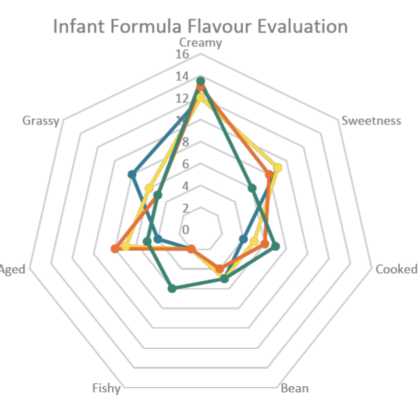Overview
Our client wanted a complex understanding of changes to the sensory profile of infant formula when stored under different conditions (E.g. temperature and humidity) for varying lengths of time. It was important to the client to understand the sensory changes of the product during transit, which would help enable data-driven business decisions surrounding exportation for international markets.
Approach
Trained Descriptive Panel
Descriptive analysis uses subjects as analytical instruments to quantify the perceived intensities of sensory characteristics of infant formula.
CASS utilised our trained panel to answer the clients question of “what, if any, undesirable and discernible changes occurs in infant formula during storage when stored under different conditions and varying lengths of time”. The following steps were followed in order to develop a group of highly trained panellists:
- Panellist recruitment – Panellist were recruited based on their sensory acuity.
- Terminology development – Panellist developed a lexicon to describe the flavours of infant formula.
- Training – Panellists underwent an intensive training period where they were calibrated to perform in the same
way, using the same scale. - Practice Evaluation – A practice evaluation occurred to ensure consistency and reliability of panellists.
- Product Evaluation – Panellist evaluated samples in isolated sensory booths.








